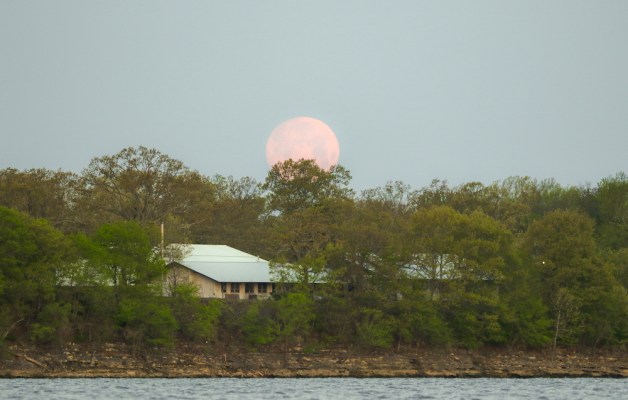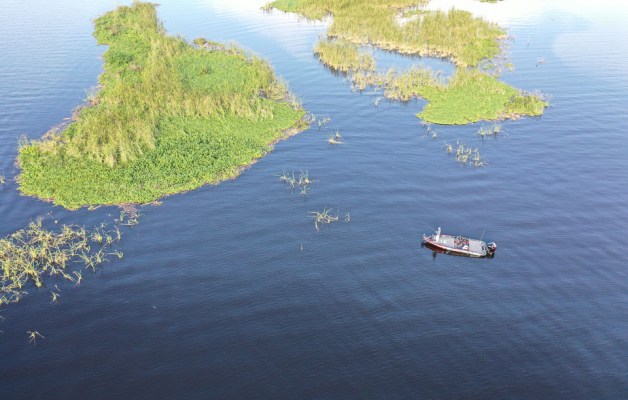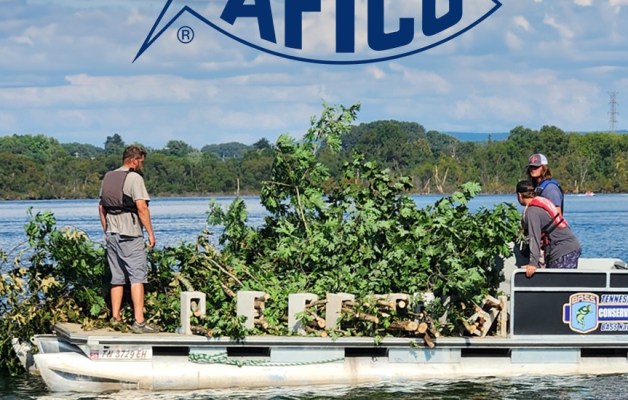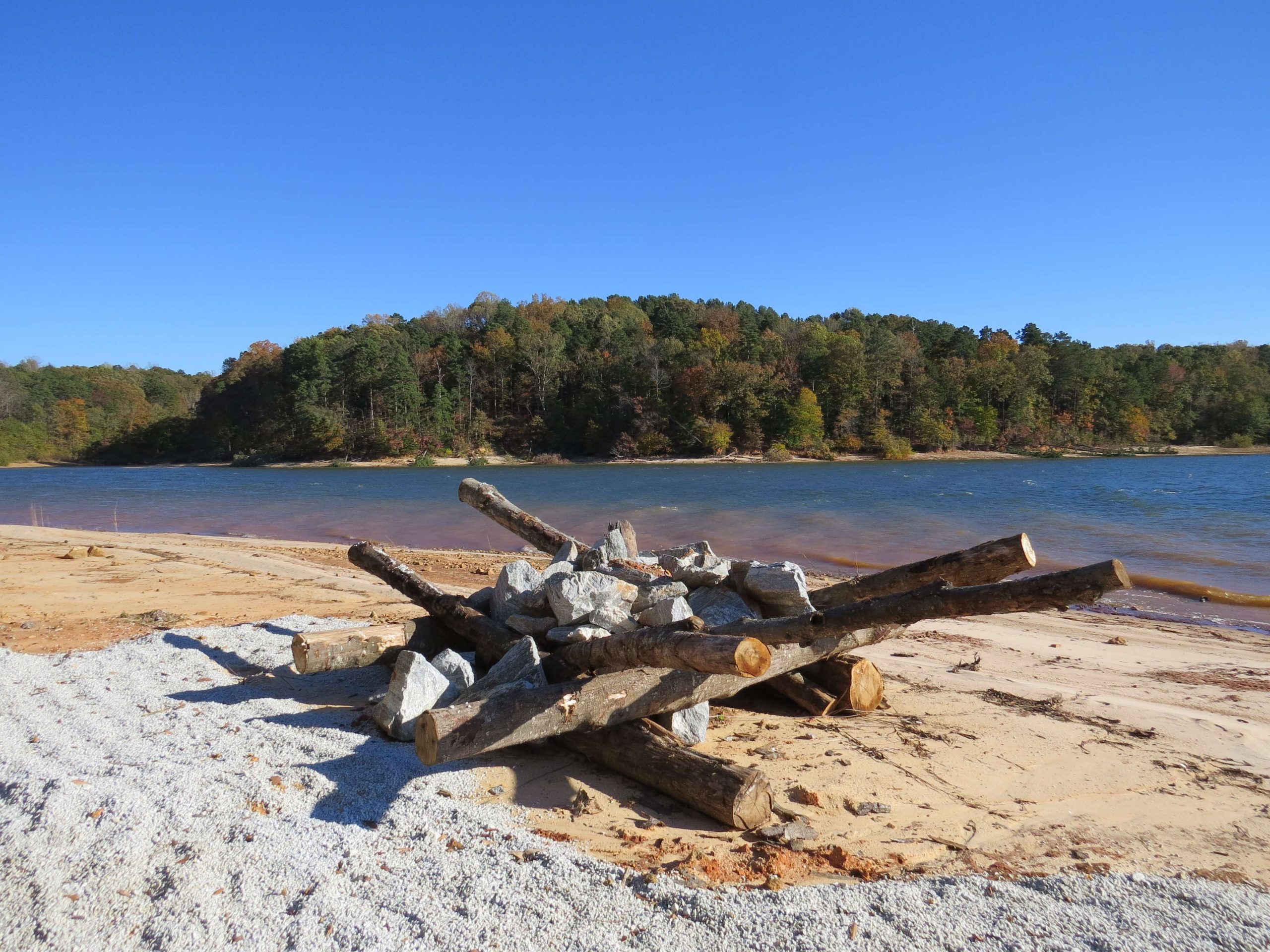
For a grad student pursuing a masters in Wildlife and Fisheries Biology, working alongside South Carolina Department of Natural Resources (SCDNR) fisheries technicians offered a rare shot of real-world exposure that stoked a fire burning in Deon Kerr’s heart.
Infused with equal doses of appreciation and diligence, the 25-year-old Clemson University student, originally from Sandusky, Ohio, said the state agency’s fervent commitment to Lake Hartwell habitat enhancement motivated him to help his role models maximize their efforts to invigorate this Savannah River reservoir, set to host the 2022 Academy Sports + Outdoors Bassmaster Classic presented by Huk.
“It sheds light on the work they do, by physically seeing the state employees doing their daily job,” Kerr said, of his April electrofishing trip in Hartwell’s Twin Lakes Cove. “Also, you get to know the employee and view their strong work ethic. It helps generate respect for the DNR, as a whole.”
Summarily, Kerr and his faculty advisor, Clemson University’s Assistant Professor of Fisheries Ecology Troy Farmer, spearhead the school’s Black Bass Habitat Selection Project on Lake Hartwell — a mission aimed at helping the SCDNR dial in its efforts to give the lake a subsurface makeover.
Living arrangements
We’ll look at Clemson’s methods in a moment, but for now, SCDNR Fisheries Biologist Amy Chastain described the state’s efforts to put back some of what has been lost. Like most impoundments of advanced years, Hartwell has seen time and water fluctuations erode a lot of the natural cover that predators and forage need.
“It’s an aging reservoir, so a lot of the habitat is lacking,” Chastain said. “I have pictures from the 2008 drought when the lake was down so far, and the first cove where we did (habitat) treatment was just like a desert. There was no structure, so this is going to add a lot of fish habitat.”
After a feasibility study and funding procurement, the SCDNR officially began its Lake Hartwell habitat enhancement efforts in 2014. Working through the learning curve, they reviewed other states’ experiences, tried a broad array of materials and gradually narrowed down their site selection and habitat types.
“We homed in on what we think works best, based on what our electrofishing (had shown),” Chastain said. “A couple of times, we’ve had some people dive on the structures to see if there were any fish there.”
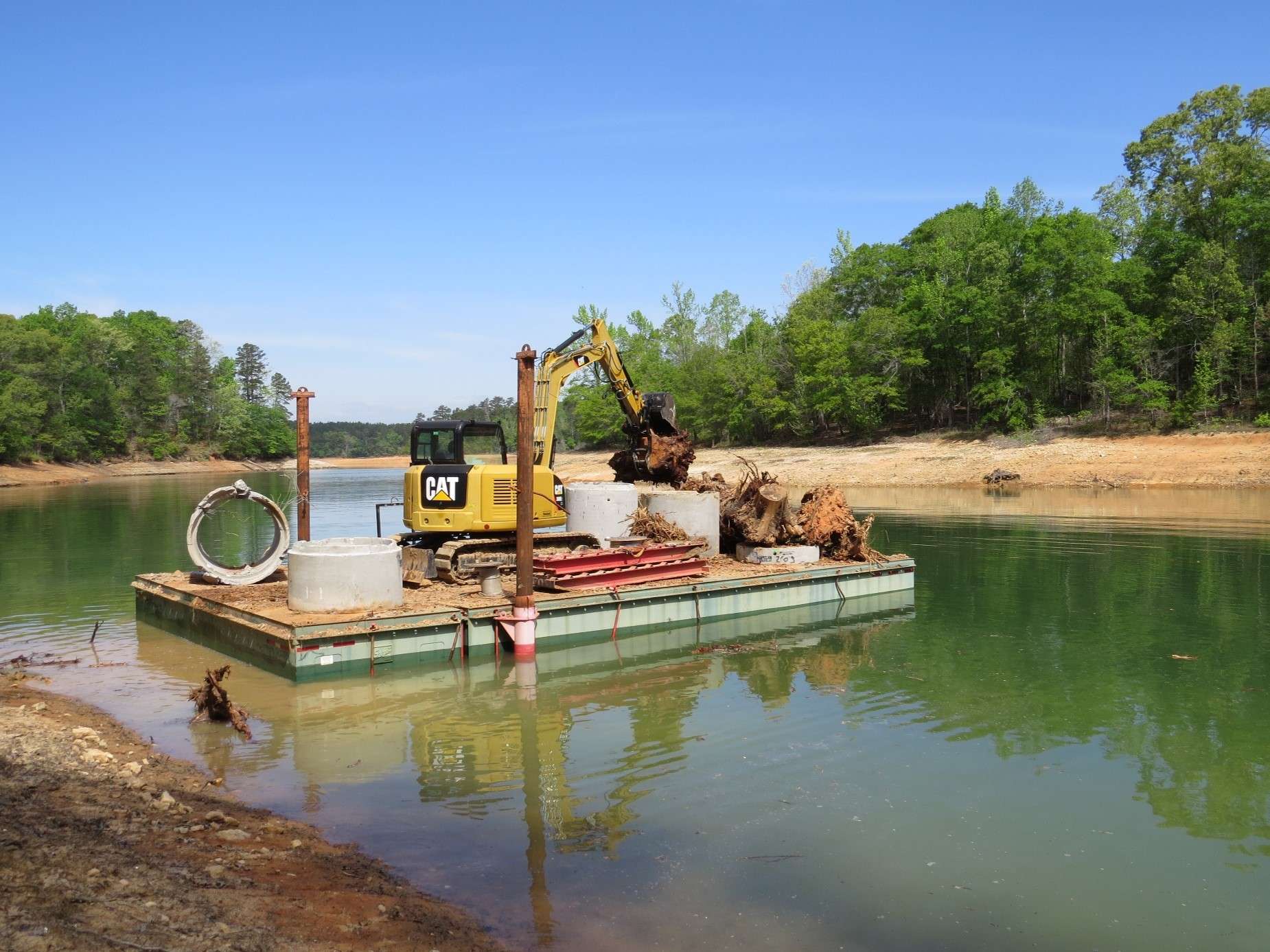
By the numbers
Chastain said the Hartwell habitat enhancement effort will continue as long as funding allows. Through 2021, the agency has enhanced eight areas with approximately 105 concrete culverts/structures, 1,300 stumps, 560 tons of broken concrete slabs, 180 tons of riprap, five tons of pea gravel, 120 PVC artificial fish attractors, 150 bamboo fish attractors, 815 trees cut/cabled from the shoreline and 1,200 maidencane plants.
Echoing Kerr’s opening sentiment, Chastain said: “We’ve been very lucky to have some area businesses donate some concrete, stumps and (other materials), so we’ve had a lot of free materials to put in the lake. We’re trying to make the money last as long as we can and do the most work.”
Chastain said the SCDNR has so far zig-zagged through Hartwell to spread the enhancement effort across the lake’s major areas. Smaller vessels efficiently transport PVC structures, bamboo piles and other lightweight materials, but transporting stumps, concrete and larger objects by barge proves more time consuming.
“With the barge, we started in the Seneca Arm, and we’re moving down the lake,” Chastain said. “With the smaller stuff, we have been moving around the lake.
“We aren’t ‘targeting’ a specific species with our habitat structures. We are constructing structures in both shallow water and deep water that are known to be used by many species.”
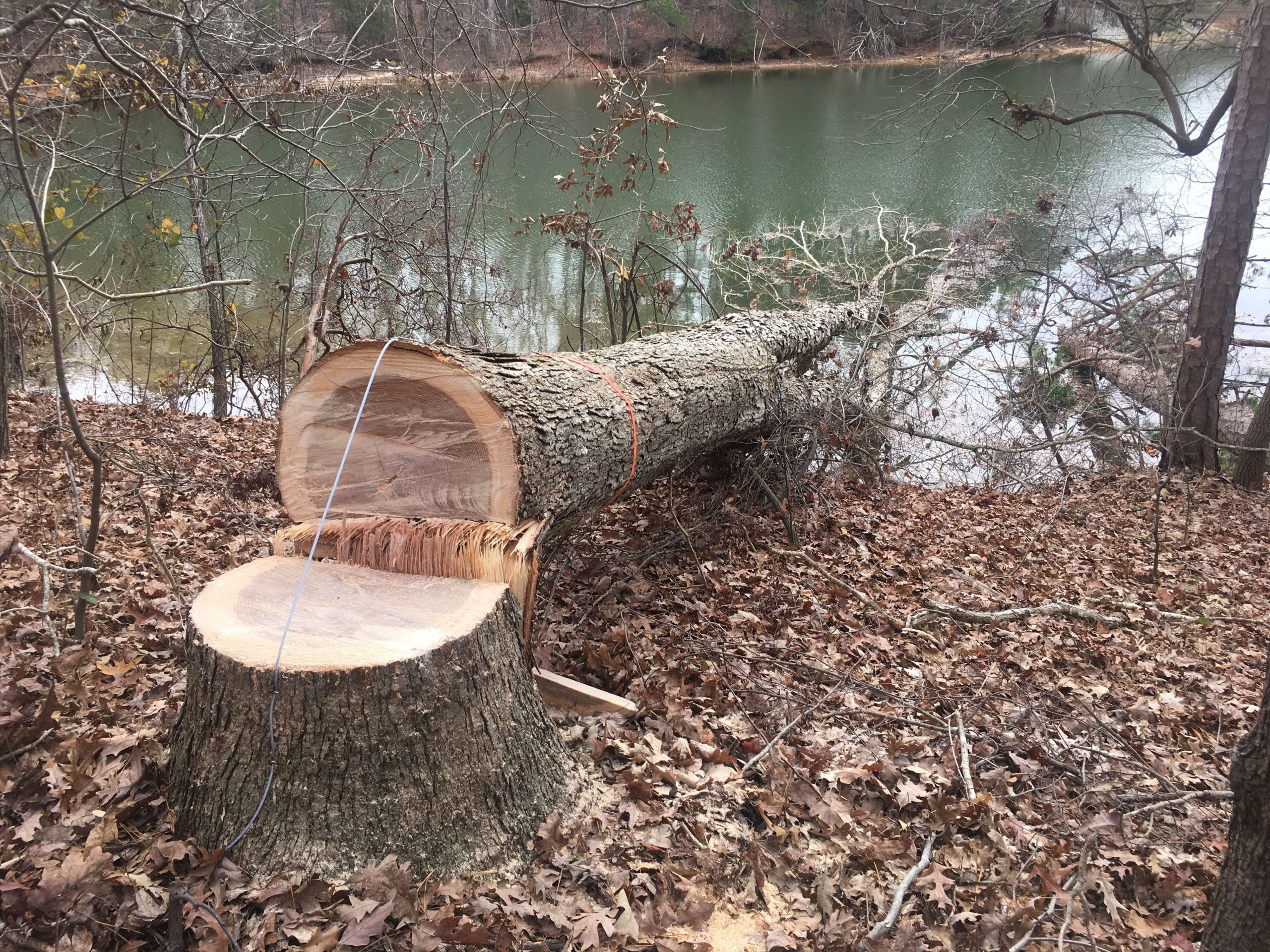
Neighborhood surveys
Dropping a bunch of fish condos into a lake sounds like a good idea — and it generally does amount to such. But determining which types of structures work best in particular areas requires analysis. This is where Clemson University’s efforts enter the picture.
Starting in 2016, Farmer’s team embarked on a mark and recapture study, which evaluates population estimates for largemouth bass in coves with and without habitat. This involves tagging bass with Passive Integrated Transponder (PIT) tags — RFID technology, which identifies a specific tagged fish by its unique 16-digit PIT tag number when scanned after recapture.
Basically, Clemson students tag a bunch of fish captured through electrofishing, revisit the same spots multiple times to resample and use the recapture data to build population estimates through individual capture histories.
“This is a joint project with the South Carolina DNR; they had one of their electrofishing boats out and we had our Clemson University electrofisher out with students,” Farmer said. “It was a great collaborative effort, because students (like Kerr) got to work side by side with state biologists, and we generated some data that was informative for management as well.”
Farmer said the mark and recapture study also uses surgically implanted acoustic telemetry tags. Emitting signals detectable by a portable listening device called a hydrophone, the tags allow his team to also track fish in deeper areas.
“A subset of the fish (captured through electrofishing) also has the telemetry tags, which allow us to understand if they were within 8 feet of the shoreline, or they were in deeper water,” Farmer said. “That told us the fraction of the population that was vulnerable to our electrofishing, and allowed us to generate more precise population estimates.”
More recently, 2021 saw Kerr launch a black bass habitat use and habitat selection project, which also uses telemetry tags. This effort includes largemouth and Alabama spotted bass.
Data driven
“Deon is doing some fine-scale tracking of (both species),” Farmer said. “When we tag them, we know what species it is and each tag is unique, so you can follow the fish around.
“He’s generating habitat use and habitat selection metrics, so he’ll have data on what depths, what habitats, what structures and what substrates both species are using. That data will then inform habitat enhancement efforts by the South Carolina DNR for optimal placement to benefit certain species.”
Complementing Clemson’s work, Chastain said the SCDNR conducts some of its own studies, mostly with the easily accessible cut-and-cable trees. Here, the agency assists Clemson with electrofishing, as these shallow lying structures make ideal targets for sampling bass, crappie and bluegill populations.
“When we’re electrofishing, they’re within our reach to see what’s there,” Chastain said. “On some of the deeper stuff, 10-15 feet deep, we can’t shock anything, so we have to look at different avenues to see what fish are there. That’s what Clemson helps us with — seeing if fish are on our structures or not.”
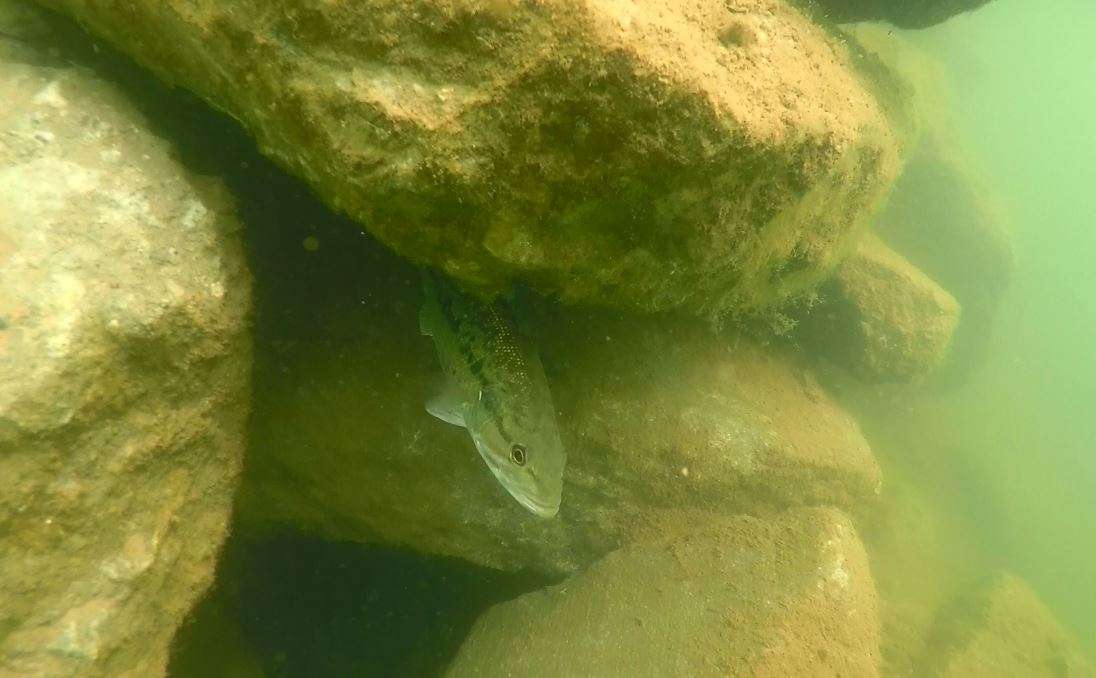
Is it working?
Chastain described her agency’s twofold objective as providing cover and refuge for forage and predators, along with fish concentration sites for anglers. While the state’s efforts, as well as Clemson’s studies are ongoing, Farmer terms preliminary results as promising.
“There has been some evidence that, after habitat enhancements were installed, largemouth abundance increased,” he said. “We’re going to do another follow-up estimate this year to see if we get another year of similar results.”
Anecdotally, Chastain has seen encouraging evidence.
“The first cove that we treated — Fants Grove WMA — is near our office (Clemson, S.C.), and it’s very rewarding when you go out of your office and you see people fishing and hear them bragging about catching a 5-pound bass off of our structures,” she said. “That’s really awesome to actually see people using our structures.”
And if Kerr has anything to say about it, the SCDNR will continue placing its habitat enhancements in all the right places.
“Our research helps (the state) maximize efforts and resources,” he said. “That is ultimately the biggest goal with the data that I want to report to the state — hopefully this will improve black bass fishing on Lake Hartwell.”



